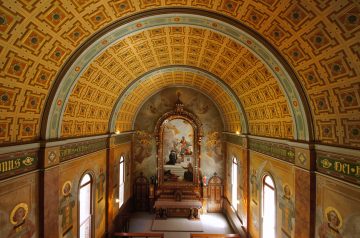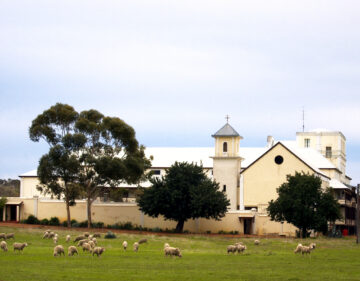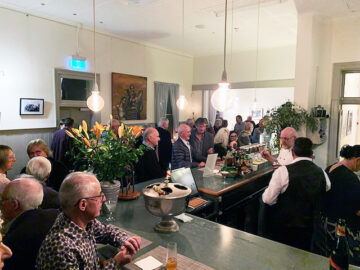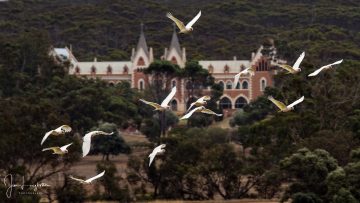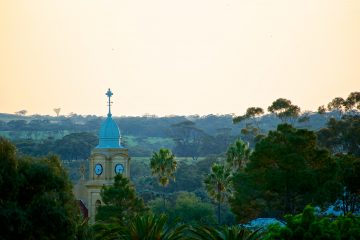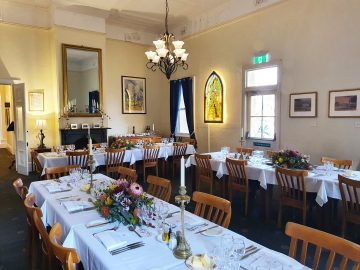Thursday, 1st June 2023
Vale Doris Walton
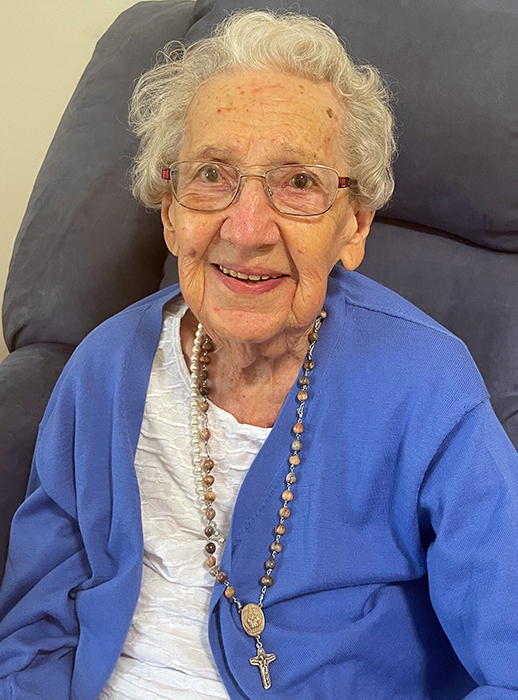
Long-time New Norcia oblate Doris Mary Walton passed from this life on 24 April 2023. The funeral mass was held at the St Vincent Pallotti Chapel, Rossmoyne. The service was jointly overseen by Fr Ray Hevern and Abbot John Herbert. Her ashes were buried, covered by the Benedictine Oblate Scapular, at the New Norcia Cemetery the following Saturday.
"Thank you for your wonderful hospitality, and the loving way that Doris was laid down in her final resting place", said her nephew, David Lee, who attended the ceremony along with other family members at New Norcia. "It was the culmination of a week where I believe we truly honoured Doris in the manner she wanted and deserved".
Excerpts from her eulogy, by David Lea:
Doris was born in Sydney on 2 June 1924, the third of six siblings. Her father, Charles Oscar Harold Polson, emigrated to Australia from Gothenburg, Sweden as a stoker on a ship. He travelled to the NSW goldfields and then worked and lived in the Rocks area of Sydney, where there was a thriving Swedish community. Too short to be allowed to join the army at the outbreak of WWI, he volunteered as soon as the height restrictions were relaxed. He was badly gassed late in the war and invalided home. He was unable to work but did create a substantial vegetable garden to sustain his growing family. As a young child, Doris was constantly at his feet and always praised him for his wisdom and guidance.
Her mother, Hilda Christina Young, was also half Swedish. Hilda's father was a Lungquist, but changed his surname to something more palatable to the locals. Doris never forgave him for that as she was proud of her Swedish ancestry and saw no good reason to hide it. For much of her life she corresponded with her Swedish relative in Gothenburg.
Doris went to Upper Fort Street School in the Rocks area and the emphasis was always on the "upper", as if to distinguish it from the rougher areas of the Rocks. Clearly the school was very strong on diction as Doris had a lifelong pride in her pronunciation and abhorred the decline in education standards she saw around her. She would still recite the "Ballad of Toad" word perfect, and with every syllable clearly enunciated well into last year.
The family moved to Earlwood and Doris attended Canterbury Girls High School, where she completed her intermediate certificate. Following school, she ended up as a stenographer clerk at the Universal Guarantee Company in Sydney. However, not so long after her 18th birthday she applied to enlist in the Australian Woman's Army Service. She told me she did so to honour her father.
So, on 18 May 1943, as the record showed, this 5'1" brown-eyed, dark-haired young woman with a scar on her mid right calf was "marched in and taken on strength by AWAS". She was discharged 1001 days later, having progressed rapidly up through the ranks to corporal and then sergeant in the HQ Second Australian Army.
What is not in the record is that Doris acted as secretary for then General Sir Thomas Blamey, head of the Australian Army. Blamey was not known as a tactful person and I'm sure that her rapid promotion and success in the job says a lot about her intelligence and skill, even at a young age.
In the post war period she was a great help to my mother, who was bringing up her first born, my late brother, Michael, while my father was often absent for long periods on naval duties. Michael and Doris were always close.
It was during that time that Doris met and married her beloved, the love of her life, Cecil Robert Walton. Cec, as he was known to us all, had also been a soldier. On 9 April 1949 they married and within six months were living in Leederville and running a shop. Doris told me that as shop keepers they were a total disaster. They were just too kind: they did not chase debts and they gave away stock to people in need. However, they stuck with it until the early 1960s when Cec joined the Department of Agriculture as a Control Officer and they moved to Rossmoyne.
Freed of the duties of running the shop, Doris had more time for other interests. She became an avid golfer and was a long-time member at Melville Glades Golf Club. She always credited her stamina, even over these later years, to the many hours on the golf course.
Doris loved music and was a regular at the Perth Concert Hall. Wagner was her favourite composer but her passion was Gregorian Chant. There were three great loves in her life: her husband, her family, and her God.
Unfortunately, Cec passed away far too young, in 1988, and Doris spent another 32 years without her "beloved". But her love for him was always there in the way that she spoke about him. Most nights she had a little whiskey and that ritual was a continuance of one they had shared together.
Doris was a devout Christian and would regularly go to church at St George's Anglican Cathedral in Perth where she played an active role in church life. She regularly went on retreat at St Mark's Benedictine Anglican Monastery in the western district of Victoria. Attending retreats became increasingly more difficult as Doris aged, so the Abbot at St Mark's suggested she might like to go to a retreat closer to home. That it was a Catholic monastery should not matter, "as it is the same God".
And so Doris' close association with New Norcia began. The monastery became such a part of Doris' life that she made the decision to continue worshipping God within the Catholic faith. Which is why we are all here today in this place, a simple chapel to say goodbye to a beautiful soul.
